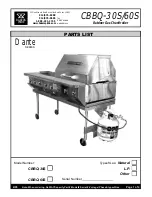
USER INSTRUCTIONS & CUSTOMER CARE GUIDE
IN
TR
ODUC
TION
8-716-106-257a (08.05)
GENERAL INFORMATION
4
GENERAL INFORMATION
Read these instructions carefully to get the best
from your appliance.
CENTRAL HEATING SYSTEMS:
During the first few hours of operation of the central
heating system, check that all radiators are being
heated at an even rate.
If the top of a radiator is at a lower temperature
than the bottom then it should be vented by releasing
air through the venting screw at the top of the
radiator. Ask your installer to show you how this is
done. Repeated venting will reduce the quantity of
water in the system and this must be replenished
for safe and satisfactory operation of the appliance.
When excessive venting or water leaks are found
in the system you must contact a service engineer
to inspect the installation and rectify any fault.
Only use additives compatible with the appliance
and system. Use of incompatible additives can cause
damage and will invalidate the appliance guarantee.
Sealed heating systems:
Where the appliance is fitted to a sealed heating
system your installer will inform you of the minimum
and maximum pressure which must be indicated
on the pressure gauge.
Regularly check the pressure is maintained and
contact your installer or maintenance engineer if
there is a noticeable, permanent drop in pressure.
If the system loses pressure it should be
repressurised and the cause of the fall investigated.
CONDENSATE:
This is a high efficiency appliance using condensing
technology which will under normal operation
produce a regular discharge of condensate to drain
and at times, give out a plume of water vapour from
the flue terminal.
ROOM THERMOSTAT:
A room temperature controller must be fitted to
control the central heating. Refer to the instructions
supplied with the thermostat for information on
siting and setting.
THERMOSTATIC RADIATOR VALVES:
It is recommended that this type of valve is fitted
to all but one of the radiators (or at least those in
the sleeping accommodation). The remaining
radiator, which must be where the room thermostat
is located, should be un-controlled and must be
left open.






































